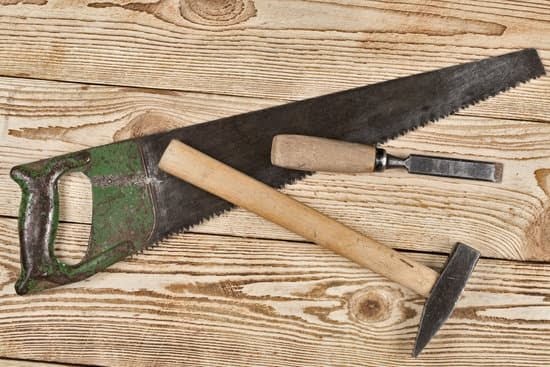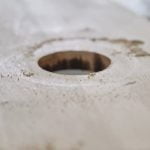White woodwork can brighten and freshen up any room, adding a touch of elegance to the space. However, without proper maintenance, white woodwork can quickly become dull and dirty, detracting from the overall aesthetic. In this article, we will discuss the importance of cleaning white woodwork, the different types of white woodwork you may encounter, and how to choose the right cleaning products to keep your woodwork looking pristine.
When it comes to maintaining the beauty of your white woodwork, regular cleaning is essential. Not only does this help preserve its appearance, but it also prolongs its lifespan. In this section, we will delve into why keeping your white woodwork clean is crucial for both its visual appeal and its durability.
Furthermore, we will explore the various types of white woodwork that you may have in your home or office. From baseboards and trim to doors and cabinets, each type requires specific cleaning methods to ensure optimal results. Understanding these differences is key to effectively caring for all of your white woodwork.
Throughout this article, we will provide valuable insights on how to select the best cleaning products for different types of white woodwork. Knowing which products are safe and effective is paramount for achieving a thorough clean without causing damage or discoloration.
Understanding the Different Types of White Woodwork
White woodwork is a classic and timeless addition to any home, adding a touch of elegance and sophistication. However, it’s important to understand that not all white woodwork is created equal. There are various types of white woodwork, each with their own unique characteristics and maintenance requirements.
Types of White Woodwork
The most common types of white woodwork found in homes include baseboards, crown molding, window frames, doors, and cabinets. Each type of white woodwork may be crafted from different materials such as pine, oak, or MDF (medium-density fiberboard), and may have different finishes such as paint or clear coat.
Characteristics and Maintenance Requirements
When it comes to understanding the different types of white woodwork, it’s important to consider their characteristics and maintenance requirements. For example, painted woodwork may require more frequent cleaning compared to stained or clear-coated woodwork. Additionally, areas with high traffic or exposure to moisture may require more frequent cleaning and maintenance.
Considerations for Cleaning
Before diving into the cleaning process, it’s crucial to understand the specific type of white woodwork you have in your home. This will help determine the appropriate cleaning products and methods to use. Whether you have painted baseboards or stained cabinets, understanding the different types of white woodwork will ensure that you are able to effectively clean and maintain its pristine appearance for years to come.
Choosing the Right Cleaning Products for White Woodwork
White woodwork is a beautiful addition to any home, but it requires regular cleaning to maintain its pristine appearance. Choosing the right cleaning products for white woodwork is crucial in ensuring that you don’t damage the finish or leave behind streaks and residue. Using harsh chemicals or abrasive cleaners can strip the paint or finish off of your woodwork, so it’s important to be mindful of the products you use.
When selecting cleaning products for white woodwork, opt for gentle, non-abrasive cleaners that are specifically formulated for delicate surfaces. Look for products labeled as suitable for use on painted or finished wood surfaces. Avoid any cleaners with ammonia or bleach, as these can cause discoloration and damage to the wood over time. Instead, consider using mild dish soap diluted in water, vinegar and water solution, or a commercial wood cleaner designed for painted surfaces.
It’s also essential to test any new cleaning product on a small, inconspicuous area of your white woodwork before using it on the entire surface. This will help you avoid any potential damage or adverse reactions to the product. Additionally, always follow the manufacturer’s instructions for diluting and applying the cleaner to ensure safe and effective results when cleaning white woodwork.
| Cleaning Product | Suitable for Use On |
|---|---|
| Mild dish soap diluted in water | Painted or finished wood surfaces |
| Vinegar and water solution | Painted surfaces |
| Commercial wood cleaner | Painted surfaces |
Step-by-Step Guide to Cleaning White Woodwork
When it comes to keeping white woodwork clean, a step-by-step guide can be incredibly helpful. Regular cleaning not only maintains the appearance of your woodwork but also extends its lifespan by preventing damage and discoloration.
Gather the Right Cleaning Supplies
First and foremost, gather all the necessary cleaning supplies before you begin. You will need a mild cleaner or wood-specific cleaner, microfiber cloths or a soft sponge, a bucket of warm water, and a dry cloth for drying.
Start With Dusting
Before applying any cleaning solution, start by dusting the white woodwork. Use a microfiber cloth or a soft brush to gently remove any dust, dirt, or debris from the surface. This simple step helps prevent scratches while cleaning.
Clean With Gentle Solution
Next, prepare a gentle cleaning solution by mixing the mild cleaner with warm water in a bucket. Dip your microfiber cloth or sponge into the solution and wring out excess water. Wipe down the woodwork in small sections, working from top to bottom to avoid streaks.
Rinse and Dry
Once you have cleaned all sections of the white woodwork, rinse your cloth or sponge thoroughly and wipe down the woodwork again with clean water to remove any residue from the cleaning solution. Finally, use a dry cloth to carefully dry the woodwork and prevent water damage.
By following this step-by-step guide to cleaning white woodwork, you can maintain its pristine appearance for years to come.
Tips for Maintaining the Cleanliness of White Woodwork
Maintaining the cleanliness of white woodwork is essential to preserve its beauty and extend its lifespan. Here are some useful tips for keeping your white woodwork looking pristine:
- Regular Dusting: Dust and dirt can easily accumulate on white woodwork, making it appear dull and dirty. To prevent this, make sure to dust your woodwork regularly with a microfiber cloth or a soft duster. This will help keep the surface clean and free from build-up.
- Use Protective Coatings: Applying a protective coating such as wax or polyurethane can help prevent staining and yellowing of white woodwork. These coatings provide a barrier against dirt and moisture, making it easier to clean and maintain the white appearance of the woodwork.
- Avoid Harsh Chemicals: When cleaning white woodwork, it’s important to use gentle cleaning products that won’t damage the finish. Avoid harsh chemicals and abrasive cleaners, as they can cause discoloration and damage to the wood.
In addition to these tips, it’s also important to be mindful of how you use and maintain your white woodwork. Avoid placing hot items directly onto the surface, as this can cause discoloration. Similarly, be cautious when using sharp objects near the woodwork to avoid scratching or damaging the finish.
By following these maintenance tips, you can ensure that your white woodwork remains clean and beautiful for years to come.
Common Mistakes to Avoid When Cleaning White Woodwork
Cleaning white woodwork is essential to maintain its beauty and prolong its life. However, there are common mistakes that people make when attempting to clean their white woodwork. These mistakes can lead to damage and deterioration of the woodwork if not addressed properly. Here are some common mistakes to avoid when cleaning white woodwork:
- Using abrasive cleaning tools: Many people make the mistake of using abrasive tools such as rough sponges or steel wool to clean white woodwork. This can cause scratches and abrasions on the surface of the wood, leading to a dull and worn-out appearance. Instead, opt for soft microfiber cloths or gentle bristle brushes to clean the woodwork without causing damage.
- Using harsh chemical cleaners: Another mistake is using harsh chemical cleaners that can strip away the finish and discolor the white woodwork. It’s important to choose cleaning products that are specifically designed for use on wood surfaces. Look for pH-neutral cleaners that are gentle yet effective in removing dirt and grime without causing harm to the wood.
- Excessive moisture: Using too much water or liquid cleaner when cleaning white woodwork is a common mistake that can lead to warping, swelling, and mold growth. It’s important to use a damp (not wet) cloth and dry the woodwork thoroughly after cleaning to prevent any moisture-related issues.
Avoiding these common mistakes will help preserve the beauty and integrity of your white woodwork while keeping it clean and well-maintained for years to come.
Remember when cleaning your white wood work, having an understanding of your type of product will ensure you do not further damage it through incorrect means.
DIY Natural Cleaning Solutions for White Woodwork
As much as possible, homeowners want to use natural and eco-friendly products to clean white woodwork. These natural solutions are not only safe for the environment but also safer for your family and pets compared to harsh chemicals. Here are some effective DIY natural cleaning solutions that you can use to keep your white woodwork looking clean and beautiful.
One of the most basic and effective natural cleaning solutions for white woodwork is a mixture of water and vinegar. Simply mix equal parts of water and distilled white vinegar in a spray bottle, then spray it onto a microfiber cloth or sponge. Use this solution to wipe down your white woodwork, making sure to thoroughly remove any dirt, dust, or grime. Vinegar is known for its disinfectant properties, making it an effective natural cleaner for your wood trim.
Another natural cleaning solution that works well on white woodwork is a mixture of olive oil and lemon juice. Mix one cup of olive oil with half a cup of lemon juice in a spray bottle, then shake well.
Spray the solution onto a soft cloth and use it to buff your white woodwork, giving it a shiny finish while also removing any built-up dirt. The acidic properties of lemon juice help cut through grime, while the olive oil helps condition the wood.
For tough stains or spots on your white woodwork, baking soda can be used as a gentle abrasive cleaner. Make a paste using baking soda and water, then apply it to the stained area. Gently scrub the paste into the stain with a soft cloth or sponge, then rinse with water. This natural abrasive cleaner can help lift stubborn stains without damaging the paint or finish on your white woodwork.
| DIY Natural Cleaning Solutions | Ingredients |
|---|---|
| Water and Vinegar Solution | Equal parts water and distilled white vinegar |
| Olive Oil and Lemon Juice Mixture | 1 cup olive oil + 1/2 cup lemon juice |
| Baking Soda Paste | Baking soda + Water (to make a paste) |
Professional Cleaning Services for White Woodwork
In conclusion, maintaining clean white woodwork is essential not only for aesthetic reasons but also for preserving the integrity and longevity of the wood. Whether it’s baseboards, crown molding, or any other white woodwork in your home, regular cleaning is crucial to prevent dust, dirt, and grime from accumulating and potentially causing damage over time.
By investing time and effort into caring for your white woodwork, you can ensure that it remains looking beautiful and holds up well for years to come.
Understanding the different types of white woodwork is important when it comes to choosing the right cleaning products. From painted surfaces to natural unfinished wood, each type requires specific care to avoid discoloration or damage. Selecting appropriate cleaning products and following a step-by-step guide will help you effectively clean your white woodwork without causing any harm.
While DIY natural cleaning solutions can be effective in keeping your white woodwork clean, professional cleaning services may also be worth considering. If you have extensive or intricate white woodwork that requires special attention, hiring professionals with expertise in handling delicate surfaces can save you time and ensure thorough cleaning without risking any potential damage. Ultimately, whether professional cleaning services are worth it will depend on the specific needs of your white woodwork and your own personal preferences.
Frequently Asked Questions
What Is the Best Way to Clean White Woodwork?
The best way to clean white woodwork is to start by dusting the surfaces with a microfiber cloth or duster. Then, mix a solution of warm water and mild dish soap to gently wash the woodwork. Avoid using harsh chemicals that can damage the finish.
What Is the Best Way to Clean White Baseboards?
To clean white baseboards, it’s best to use a soft brush attachment on a vacuum cleaner to remove any loose dirt and dust. Then, wipe the baseboards with a damp cloth or sponge and a gentle cleaning solution. Be sure to dry them thoroughly afterwards.
How Do You Get White Wood White Again?
Over time, white wood can become discolored due to dirt, grime, or sunlight exposure. To restore its whiteness, you can try using a mixture of vinegar and water as a natural cleaning solution.
For tougher stains, you may need to use a wood cleaner specifically designed for white wood surfaces. Additionally, refinishing or painting the wood may be necessary to achieve the desired whiteness again.

Hi everyone! I’m a woodworker and blogger, and this is my woodworking blog. In my blog, I share tips and tricks for woodworkers of all skill levels, as well as project ideas that you can try yourself.





